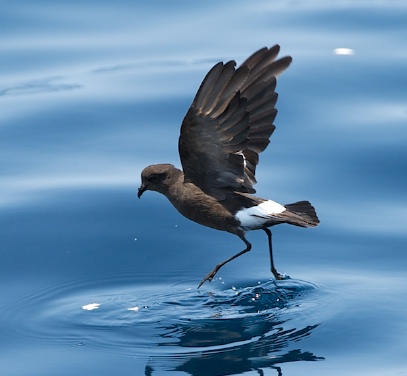
Oceanites oceanicus
SUBFAMILY
Oceanitinae
TAXONOMY
Oceanites oceanicus Kuhl, 1840, no locality. O. o. oceanicus: Islands
off Tierra del Fuego and subantarctic islands of Atlantic
and Indian Oceans, including South Georgia; O. o. exasperatus:
South Shetland, South Sandwich, South Orkney Islands, Elephant
Island, coasts and offshore islands of Antarctica.
OTHER COMMON NAMES
English: Mother Carey’s chicken; French: Pйtrel ocйanite; German:
Buntfьssige Sturmschwalbe; Spanish: Paiсo de Wilson.
PHYSICAL CHARACTERISTICS
7 in (18 cm); 1.3 oz (35 g). Wholly black above and below except
for white rump merging into the white lower flanks and
thighs and a pale band across the center of each wing. Tail
square cut and black. Legs black, very long, and projecting beyond
the tail when flying; webs between toes yellow. Juvenile
like adult. Bill black with prominent nasal tubes reaching about
halfway along the
ridge of the bill.
Sexes alike.
DISTRIBUTION
Wholly marine except
when nesting,
found in all oceans
particularly along
coastal upwellings
and fronts. It tends
to be more often
seen offshore compared
to other
storm-petrels such as
Leach’s and whitefaced
storm-petrels,
which prefer deeper
water.
Highly migratory, moving from April to June from the
southern breeding stations to northern reaches of the oceans,
but avoids Arctic seas. In the Atlantic the journey from the
south is 7,000 miles (11,000 km) for some birds.
HABITAT
These birds are concentrated along the ocean shelves during
the northern summer. Although most move back to southern
waters to breed during the northern winter, some remain:
these are probably juveniles or birds that are taking a season
off-duty—a so-called sabbatical year.
BEHAVIOR
The feeding
BEHAVIOR
is distinctive with a flight characterized
by alternate glides and wing flutterings while the long legs are
drooped and often break the surface. Most food is snipped
from the surface without alighting, and this is the most common
ship’s follower. Calls used on the breeding grounds include
a grating sound used by both sexes and a chatter call
used by the males to attract females.
FEEDING ECOLOGY AND DIET
Crustaceans, but fish are also eaten (these are more energy rich
than crustacea) with mycophids up to 3.3 in (8.5 cm) long being
fed to the chicks (quite a meal for a bird with a bill only
0.5 in [1.2 cm] long).
REPRODUCTIVE BIOLOGY
The pair-bond is held over several seasons and most pairs
tend to breed annually. The nest forms their focus. There is
little to suggest that they stay together during migration. Because
of the short polar summers, Wilson’s storm-petrels
breeding around Antarctica have accelerated the development
of the egg and chick: the time from laying to fledging is 91
days (the shortest period for any tubenose). Birds farther
north, though slightly smaller, take longer, perhaps because
the food supply is less concentrated than it is off the southern
continent.
Most nests are hidden in crevices among rocks or coarse
scree. The egg is laid on the bare earth in a shallow scrape,
and those on the southern islands are often lined with scraps of
local vegetation.
The eggs take about 40 days to hatch if continually incubated.
The chick flies at 48–78 days old. A major cause of
mortality is unseasonal weather that stops birds entering their
nests or freezes chicks within them. Predation by skuas is not
usually significant.
CONSERVATION STATUS
Not threatened. One of the most abundant seabirds. Its isolation
is its major safeguard.
SIGNIFICANCE TO HUMANS
None known.
Other popular Animals
Photo Gallery of - Wilson’s storm-petrel
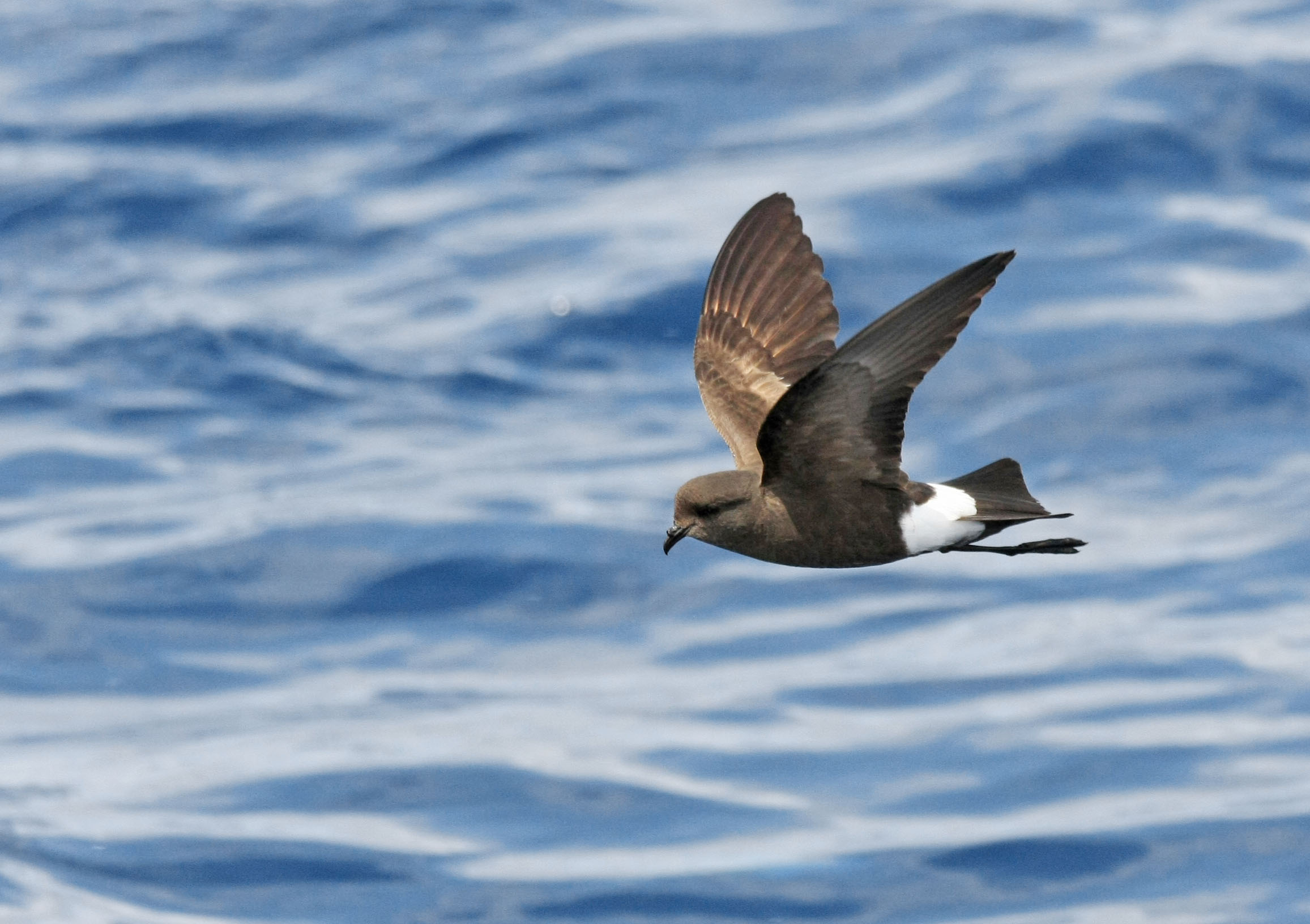
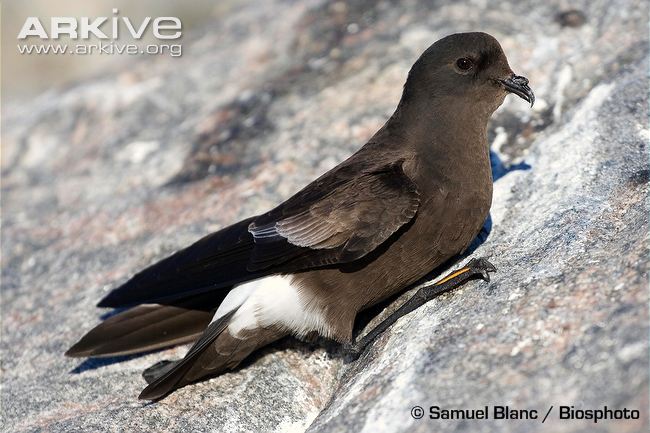
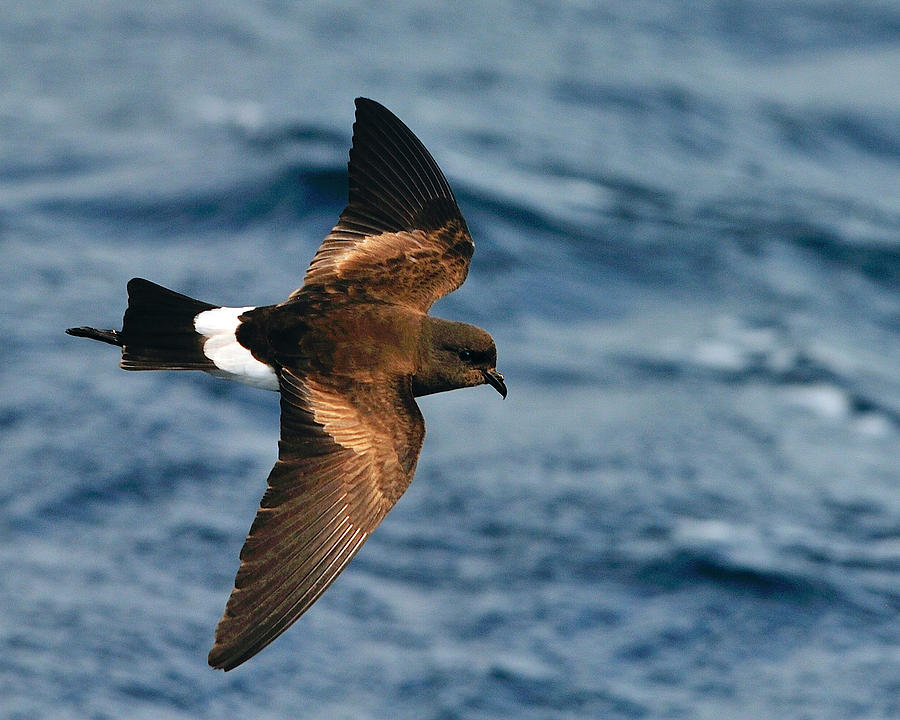
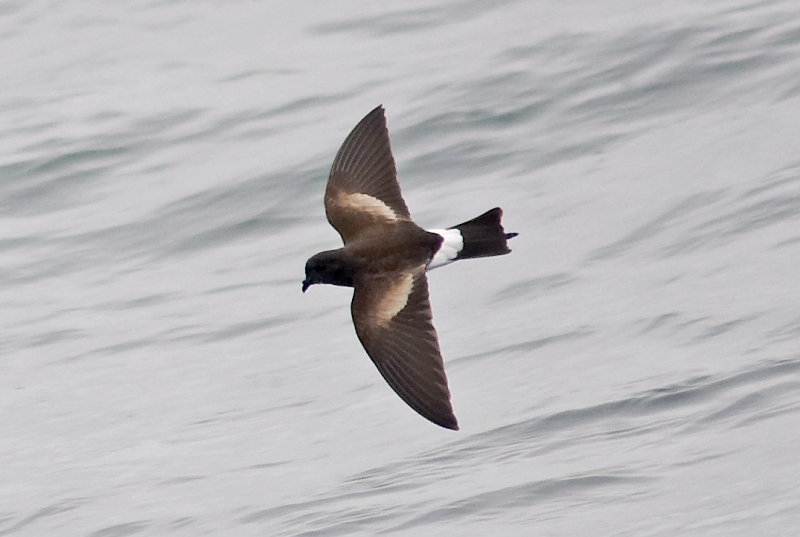
 Animalia Life
Animalia Life